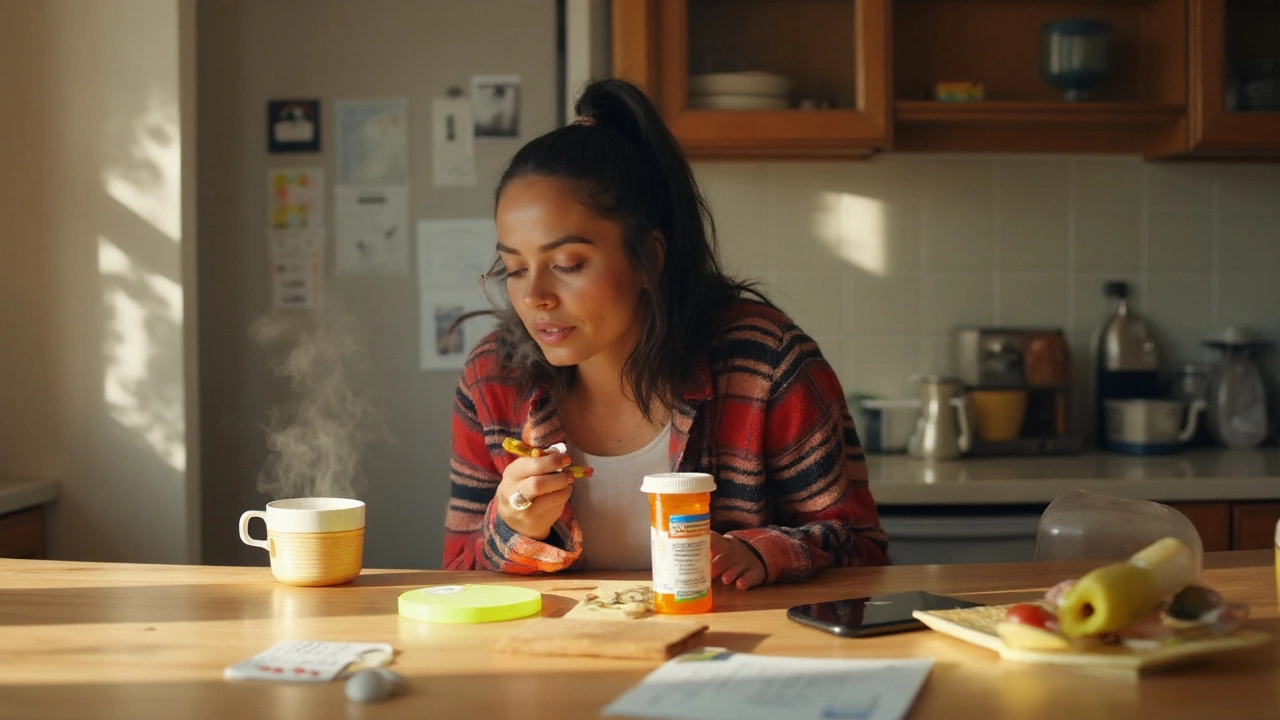Medication Glossary – Simple Definitions & Tips
Ever opened a prescription bottle and felt lost in a sea of abbreviations? You’re not alone. Knowing what those words mean can keep you safe, save money, and make doctor visits less stressful. This quick‑read guide breaks down the most common drug terms you’ll see on labels, in pharmacy chats, or online articles. No jargon, just plain English you can use today.
Key Drug Terms You Should Know
Prescription (Rx): The official order from a doctor that lets you get a medication at a pharmacy. If you see “Rx only,” it means you can’t buy it over the counter.
OTC (Over‑the‑counter): Medicines you can pick up without a prescription, like ibuprofen or allergy pills. They’re safe for most people, but still read the label.
Generic: The non‑brand version of a drug. It has the same active ingredient, strength, and effect as the brand name, but usually costs less.
Dosage: How much of a drug you take and how often. It might be written as “1 tablet twice daily” or “5 ml every 8 hours.” Follow it exactly.
Side effect: Any unwanted reaction you might feel while taking a medication, like drowsiness or an upset stomach. Not every side effect is serious, but call your pharmacist if you’re unsure.
Contra‑indication: A condition or factor that makes a particular drug unsafe for you. For example, some blood thinners can’t be used if you have a bleeding disorder.
Refill: The permission to get more of the same medication without a new prescription. Your pharmacy will note how many refills are left.
Safe Storage & Usage Basics
Storing meds right is just as important as taking the right dose. Keep everything in a cool, dry place away from direct sunlight. The bathroom cabinet might seem handy, but the heat and humidity can break down many drugs.
If a label says “store in refrigerator,” that’s a real clue. Some antibiotics, insulin, and certain eye drops need the cold to stay effective. Put them in the main compartment of the fridge, not the door, where temperature swings happen.
Kids and pets are curious. Always lock up medicines in a high cabinet or a lockable box. Even “harmless” vitamins can cause trouble if swallowed in large amounts.
Check expiration dates regularly. A drug past its date might lose potency or even become harmful. When in doubt, toss it out safely—most pharmacies offer take‑back programs.
When you start a new prescription, write down the name, dose, and timing in a phone note or a pill organizer. This helps you avoid double‑dosing or missing a dose, especially if you’re juggling several meds.
Finally, talk to your pharmacist or doctor if you notice anything odd—new symptoms, a weird taste, or a rash. They can tell you if it’s a normal side effect or something that needs attention.
That’s the core of our medication glossary. Keep this page bookmarked and refer back whenever a new term pops up. Understanding the basics helps you stay in control of your health and makes every doctor visit smoother.
